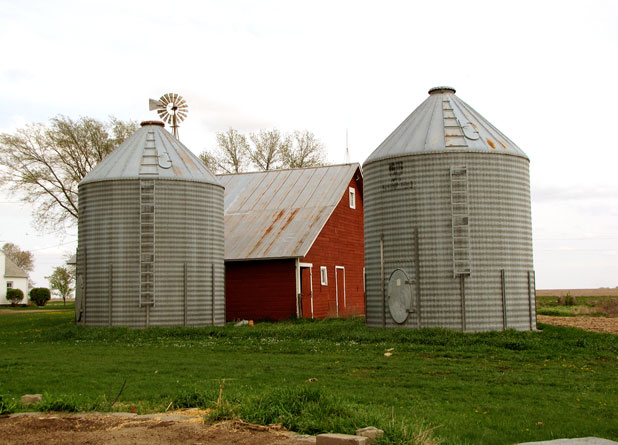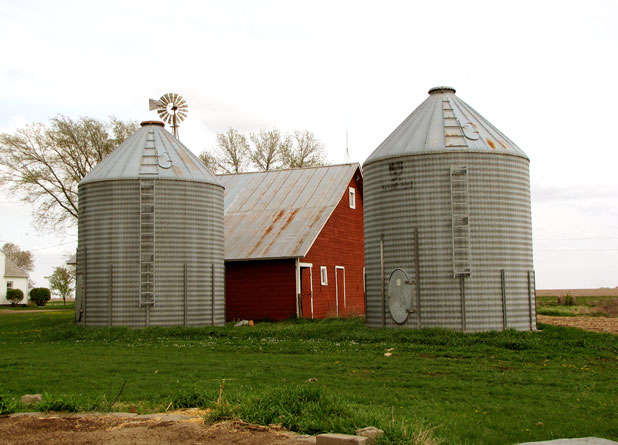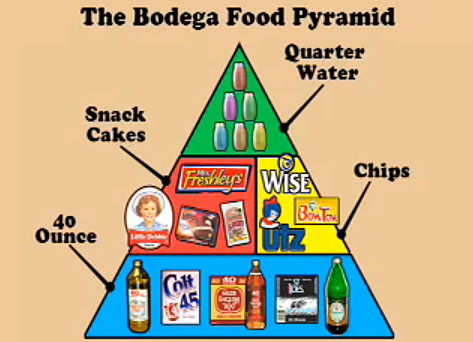 These granaries once stored this farm’s corn. No more. (Steph Larsen)Experience is the best teacher, but there’s been a big gap in my experience I couldn’t fill. I’ve worked in food and agriculture policy for a good number of years now, yet I had never once tried to apply for any of the programs for which I advocate.
These granaries once stored this farm’s corn. No more. (Steph Larsen)Experience is the best teacher, but there’s been a big gap in my experience I couldn’t fill. I’ve worked in food and agriculture policy for a good number of years now, yet I had never once tried to apply for any of the programs for which I advocate.
Until now. I stopped by the Farm Service Agency office (also known as the FSA) to apply for the Environmental Quality Incentives Program (EQIP), but I didn’t leave with anything I anticipated.
EQIP is a Department of Agriculture program that helps pay for conservation practices, and high on their list is turning erodible land over to crops that won’t be tilled. Of our 12 acres, five were formerly cornfields that we’ve planted in a mix of grasses to graze our sheep. Grass seed is expensive, as is having someone plant it, so a little assistance from the government is most welcome.
I wasn’t in the agent’s office for five minutes before we encountered two hurdles. The sign-up period closed in February, and in order for us to be reimbursed, the program has to approve any conservation practices before we do them.
Oops. Our grass was planted in April. We still might qualify for other conservation measures, but I now know that federal farm programs don’t really like it if you act first and ask for reimbursement later. Good thing we weren’t counting on that money.
Luckily a woman who works in the same office for the Natural Resource District was listening, and she has a program that will pay for 75% of the cost of grass seed. This is one of many instances where actually sitting down across a desk from a live human is far superior to looking things up on the Internet. She could tell me exactly what programs would help me, and in that small office I felt like they already knew who I was.
Just about the time I was finished signing my name to half a dozen different forms, the tornado sirens went off. After looking out at the pea-sized hail and the blue-green sky, I and about six government workers piled into a windowless room to wait out the storm. We started chatting, and we discovered that I qualified for a “direct payment.” A relic of the 1996 Farm Bill, direct payments pay landowners if their land is planted in one of a variety of agriculture crops, or even if it just used to be.
This was news to me, since the Farm Bill banned direct payments to anyone with fewer than 10 acres of cropped land. But because I own 50% of a farm and I’m a woman — and therefore socially disadvantaged by some USDA standards — I could still collect my $67. The deadline just happened to be that day, so I hurriedly and without thinking signed a few more forms and brought one home for my partner to sign. They even offered me an advance if I wanted some of the money right then.
It wasn’t until after the storm had passed and I’d been home a few hours that I remembered something. I hate direct payments as a government policy. It doesn’t matter if the landowner still plants crops or not, if prices for a crop are high or low, if the farmer has lost money or even if the landowner needs the payment or not — the check still comes in the mail. Direct payments seem positively feudal to me.
The government has a role to play if a small or mid-sized farmer runs into problems outside of their control, like volatile grain prices or a rare and unforeseen natural disaster. But handing out money just because I own farmland? That doesn’t seem right.
The lure of free money is a strong one though, and I’m a little ashamed to say it took me the better part of a day to decide that I didn’t want to complete the paperwork. I tried to suggest to myself that receiving a direct payment would be a learning experience that would allow me to advocate even better for the programs I do care about. I even tried to rationalize accepting it by reminding myself that I’ve taken tax credits for which I qualified even when I thought the policy was ill-advised.
The thing is, I haven’t spent my (short) career advocating for a more just tax policy, but I do know that billions of dollars go to landowners, regardless of their need, when I’d rather they be used for conservation or to feed hungry people. Direct payments accounted for about half of the $5 million in farm subsidies in 2009 for my county alone. I can think of a lot of things we could do to develop our rural economy with that amount of money.
Plus if I take the money, my name would end up in the Environmental Working Group’s database of farm subsidy recipients. I’m not eager to join their ranks, so $67 seems a small price to forfeit to stay off that list.
To be clear, I don’t begrudge farmers who accept direct payments. Some of them are our neighbors and friends, and some of them need those payments. Many of them probably haven’t ever thought about the implications of taking money for which the government says they’re eligible.
But I don’t need $67, and I know too much about the hefty costs of direct payments to accept them myself.




